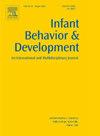Revisiting intrinsic sex differences in STEM aptitude: Insights from infant development research twenty years after Spelke (2005)
IF 1.9
3区 心理学
Q3 PSYCHOLOGY, DEVELOPMENTAL
引用次数: 0
Abstract
The origins of gender inequalities in science, technology, engineering, and mathematics (STEM) remain debated. A key question is whether these inequalities arise from intrinsic sex differences in cognition and perception present in infancy, social and cultural influences experienced throughout development, or a combination of both. In a formative 2005 review, Spelke argued against intrinsic sex differences in STEM aptitude, citing myriad evidence of sex similarities in infant visual object preferences, numerical cognition, and spatial reasoning. This review reassesses Spelke’s claims in light of contemporary research on infant development within these domains. In contrast to Spelke’s arguments, the extant literature now suggests that sex differences in visual preferences and spatial processing emerge within the first year of life. However, there is insufficient evidence to conclude that such sex differences are intrinsic or contribute to later gender inequalities in STEM, aligning with Spelke’s broader conceptual thesis. The findings of this review underscore the need for integrative approaches to identifying the factors that give rise to early sex differences in object preferences and spatial processing, longitudinal research to assess the developmental stability of these sex differences, and diverse samples to inform developmental pathways that shape gender inequalities in STEM.
重新审视STEM能力的内在性别差异:Spelke(2005)之后二十年婴儿发展研究的见解
科学、技术、工程和数学(STEM)领域性别不平等的根源仍存在争议。一个关键的问题是,这些不平等是源于婴儿时期认知和感知的内在性别差异,还是源于整个发展过程中所经历的社会和文化影响,还是两者兼而有之。在2005年的一篇形成性评论中,Spelke反对STEM天赋的内在性别差异,他引用了大量证据,证明婴儿在视觉对象偏好、数字认知和空间推理方面存在性别相似性。这篇综述根据这些领域内婴儿发育的当代研究,重新评估了斯佩克的主张。与Spelke的观点相反,现有的文献表明,视觉偏好和空间处理的性别差异在出生后的第一年就出现了。然而,没有足够的证据表明这种性别差异是内在的或导致了STEM中后来的性别不平等,这与Spelke更广泛的概念论点一致。本综述的研究结果强调需要综合方法来确定导致物体偏好和空间处理的早期性别差异的因素,需要纵向研究来评估这些性别差异的发展稳定性,需要多样化的样本来为形成STEM中性别不平等的发展途径提供信息。
本文章由计算机程序翻译,如有差异,请以英文原文为准。
求助全文
约1分钟内获得全文
求助全文
来源期刊

Infant Behavior & Development
PSYCHOLOGY, DEVELOPMENTAL-
CiteScore
4.10
自引率
4.80%
发文量
94
期刊介绍:
Infant Behavior & Development publishes empirical (fundamental and clinical), theoretical, methodological and review papers. Brief reports dealing with behavioral development during infancy (up to 3 years) will also be considered. Papers of an inter- and multidisciplinary nature, for example neuroscience, non-linear dynamics and modelling approaches, are particularly encouraged. Areas covered by the journal include cognitive development, emotional development, perception, perception-action coupling, motor development and socialisation.
 求助内容:
求助内容: 应助结果提醒方式:
应助结果提醒方式:


